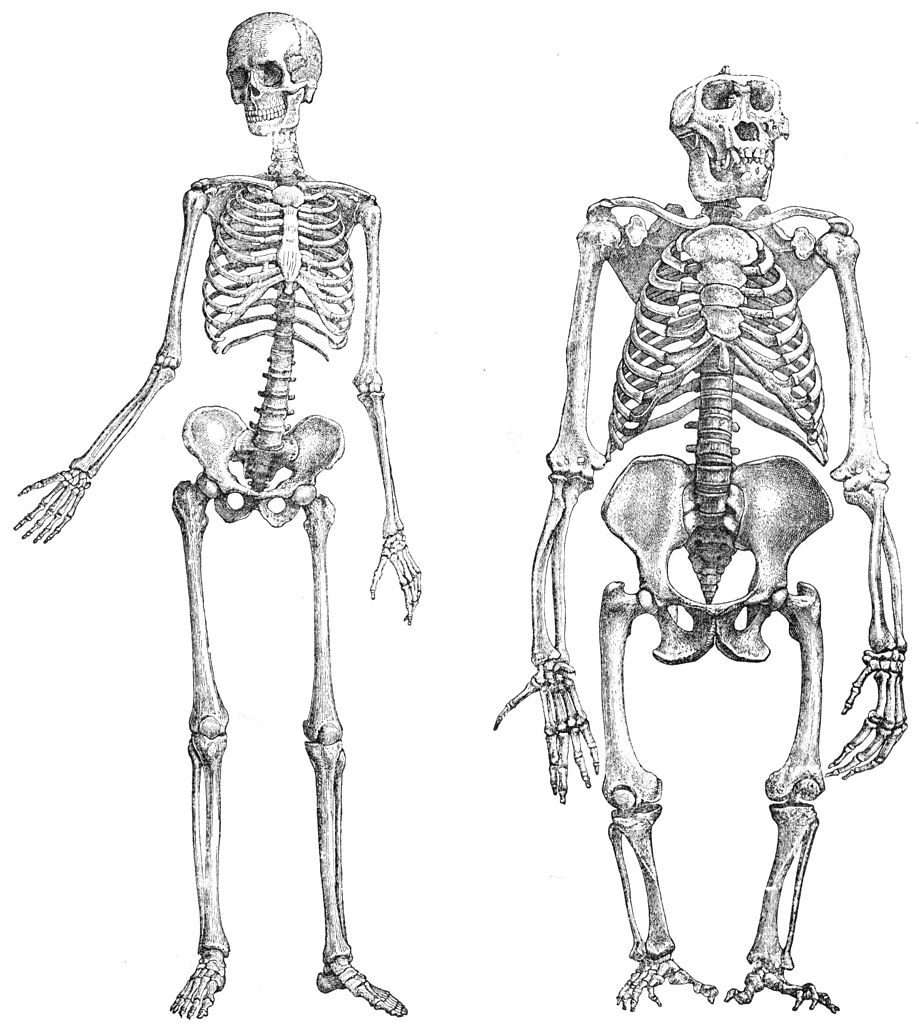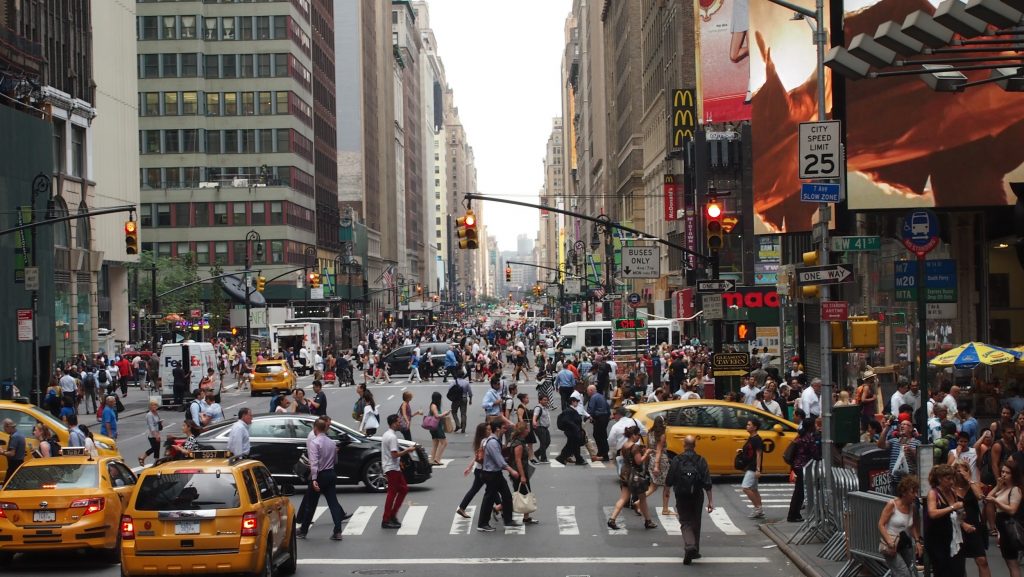InTrans / Oct 02, 2017
Walk the walk
Go! Magazine
 posted on October 2, 2017
posted on October 2, 2017
What does it mean to walk?
Walking is the original mode of transportation. Actually, walking on our own two feet is one of the things that classifies us as human. So, walking is an essential part of who we are, but the real question is, why don’t we do it more often?
It may be because in our modern way of doing things, walking is an inconvenient choice when we have other effective modes of transportation like buses, trains, cars, and other things that run on an engine instead of human power. If walking is one of our many choices, why should we choose to walk when other forms of transportation are so much…easier?
The evolution of walking
Before we talk about the benefits of walking, let’s take a look at why it makes us human.
There are major traits and behaviors that classify us as human beings, which include: big brains, language, technology, art, and of course, walking upright. In fact, when looking at the evolution of human beings, walking upright came before larger brains. The earliest hominids—a primate family that includes humans and their ancestors—were capable of walking upright.
Bipedalism, or moving around using your rear limbs or legs, first separated our earliest ancestors from the rest of the four-legged apes. Bipeds have an anatomy that includes a broad pelvis and thigh bones that bring the feet in line with the body’s center of gravity, allowing for the stability needed to walk on two limbs.
And although even our earliest ancestors had these qualities and were able to walk upright, they probably moved very differently from how we walk today. It wasn’t until 1.89 million years ago that hominids grew long, evolved legs with the emergence of Homo erectus, an extinct species that had a similar range of body sizes to humans today. What scientists don’t know is why hominids became bipedal to begin with.
The benefits of walking

So, now we know that walking is a fundamental aspect of human evolution and how we came to be, what can it do for us today? It’s simple: Walking is beneficial to both the individual and the environment.
But what can walking do for you?
Not only is walking an easy way to get around, but it comes with benefits! Walking regularly can help you maintain a healthy weight, it can also prevent and manage various health conditions like type 2 diabetes, high blood pressure, and heart disease. Brisk walking can also help strengthen your bones and muscles and improve your mood and balance. And of course, the more frequently you walk, the more you benefit!
Not only is walking good for you, but it’s good for the planet, too!
When more people choose to walk their commute instead of drive, that means less cars on the road, and less cars means less pollution to the environment. Vehicles are America’s biggest “air compromisers,” producing one-third of all air pollution in the United States. Automotive production, use, and disposal leaves a huge footprint on the environment. So, the less cars on the road, the better.
Walking in the US
In the United States, we don’t walk as often as people do in other parts of the world.
Walking and another forms of eco-friendly transportation like biking make up a relatively small portion of how people choose to commute in the United States. More than half of all Americans commute to work every working day. Personal vehicles and public transportation aren’t the only mode of commuting, but in the US, they’re the most popular.
Census data from 2008–2012 showed that workers living in principal cities, or the largest cities in each metropolitan or micropolitan area, walked to work at a rate of 4.3 percent. It also showed that only 2.4 percent of workers in the suburbs walked to work. In other words, it would appear that non-motorized travel is a more accessible option in larger cities.
Walkable cities
So, what makes a city “walkable?”
Walkable cities are somewhere you can get everywhere you need to go on foot. In a walkable city you can go to work, school, shops, restaurants, and run errands the old fashioned way—by walking. A city being “walkable” is of growing importance to real estate shoppers, especially millennials.
So, where are the most walkable cities in the United States? In a country where everyone seems to be driving their car or riding the bus or train to work and school, where can you find relief from the commute one step at a time?
Seven of the most walkable cities in the US are Miami, Florida; Philadelphia, Pennsylvania; Newark, New Jersey; Boston, Massachusetts; San Francisco, California; Jersey City, New Jersey; and of course, last but not least: New York, New York. In these bigger cities, it’s not only easier to walk from place-to-place, it’s also more important. Traffic congestion can be a huge obstacle for larger cities.

Walk the walk
Not only is walking important to our past and where our species came from, it’s also important for the future and where our species is heading. There are a lot of things that need to change in order to have a healthier planet, but you can start to help make the change with your own two feet.
With vehicles releasing billions of tons of greenhouse gases into the atmosphere each year, it’s of increasing importance that we rely less on cars and more on non-motorized forms of transportation, like walking (and other clean forms of energy) to help combat air pollution and global climate change. Just take it one step at a time, like walking to the store instead of taking the car. And when you choose to walk, it can help you, too. Because when you walk the walk, it’s a win-win!
References
www.smithsonianmag.com/science-nature/becoming-human-the-evolution-of-walking-upright-13837658/
www.mayoclinic.org/healthy-lifestyle/fitness/in-depth/walking/art-20046261
environment.nationalgeographic.com/environment/green-guide/buying-guides/car/environmental-impact/
www.city-data.com/blog/2482-bicycling-walking-work-united-states/
www.census.gov/library/publications/2014/acs/acs-25.html
www.moneytalksnews.com/slideshows/the-35-most-walkable-cities-america/
www.fueleconomy.gov/feg/climate.shtml
Related links
Green infrastructure: One ‘step’ at a time
Walking as a practice: https://www.saferoutespartnership.org/resources/fact-sheet/walking-practice
Transportation facts: www.greencarreports.com/news/1050962_15-facts-you-may-not-know-about-transportation-around-the-world
By Hannah Postlethwait, Go! Staff Writer